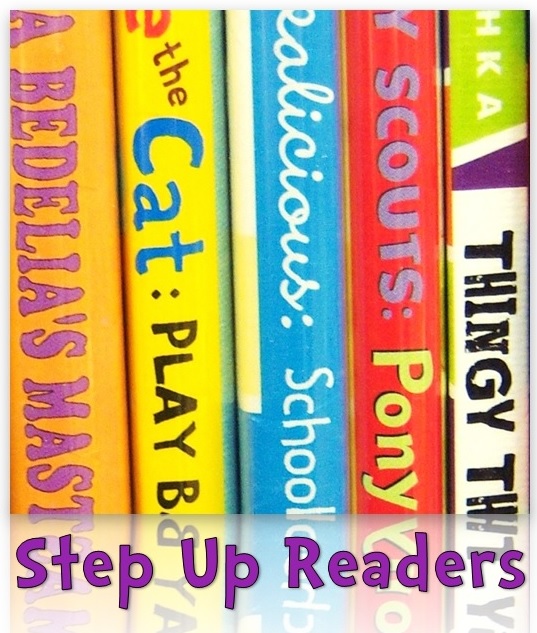Today, I’m participating in the amazing series, “Show Me the Awesome!” that was started by Kelly, Liz, & Sophie. For more AWESOME, please check over at their sites for the official link-up. Also, don’t forget to tag your related posts with #30awesome on Twitter, Tumblr, Vine and/or Instagram if you’re liking what you’re reading and want to talk about it!
This is Part Two of a five part series about how I grew my storytime attendance. In the past three years since I took over storytime, I’ve increased our program attendance by 61% compared to the last successful season. (For the statistics nerds out there, I’m comparing Summer 2009 from before I took over to Winter 2012/2013.) And I promise that these are simple measures that almost every library can do, regardless of budget.
—
Part Two: Preschoolers Are Creatures of Habit (And secretly, so are their parents!)
I touched upon my library’s revolving door of staff members in this ALSC post, but I’ll recap here. Essentially, my library is super close to a library school. We’d hire a library student as an assistant, they would get their degree and then a full-time job, and then we’d hire another assistant. From when I started at my library in Fall of 2006 to when I took over storytime in Fall of 2009, six different librarians/library assistants had been in charge of storytime.
My patrons needed some stability. And here’s how I fixed it:
1. I picked a day for storytime and stuck with it, for a long time. Storytime had been bounced around the calendar from Tuesday morning to Monday nights to Wednesday morning, etc. If word of mouth had any hope to travel, the day and time for storytime had to be consistent. I picked Thursday mornings, based on our after-school programs and room availability. And I refused to move it for at least a year.

Applesauce in his storytime chair!
2. After adjusting to six different styles of storytime presenters, I wanted to create traditions at my library — something that older siblings could tell to their younger siblings: “And then…at the end of storytime, Applesauce comes out! You can pet him, you can stick your hand in his mouth, he doesn’t have any teeth.” I bought a Folkmanis golden retriever puppet that can live at the library and be in storytime no matter who is doing the presenting. I have to say, it was a great, friendly puppet choice and I’ve never (knock on wood!) had a child scared of him.
3. After trying several different opening/closing songs, I went with a “Farmer in the Dell” rewrite for both. It’s only now — after two years of singing these songs — that my patrons are chiming in.

(There are a few translation errors in the picture; I’ve since corrected them.)
4. And it was also time to lay down the rules. I sat down and wrote some basic thoughts out, and wrote down the necessary storytime rules I needed patrons to know. My co-worker made a sign, I wound up re-vamping it recently to include picture cues for the kids. If rules are your thing too, you can download the PDF version of this (error free)
at the original post. This move was for my parents. Once I started to build an audience, I wanted to make sure we were all on the same page for expectations. It took me about a year before I realized this and I wish I had done it much sooner.
5. I gave myself permission to re-use books, songs, fingerplays, and flannelboards. Yes, almost every preschooler knows the story of “The Very Hungry Caterpillar.” Does that mean when I pull out the flannelboard, they all moan and cry, “Oh no, Miss Katie. Not that one again!”? Nope. They squeal with delight, with recognition. And the one toddler who doesn’t know the book walks away with a new story that day.
—
Not only did these changes help my community and my families, I really feel like they grounded me in storytime. By making these decisions and changes, I started to own my storytime style — which made it easier for me to do what I needed to do for my job. But owning my style also made me love storytime. It made me jump out of bed on Thursday mornings and get to work already in a good mood, ready to face the day and the growing groups of preschoolers.




 3. Find out what makes you excited to do storytime. For me, that was flannelboards. I *love* using and making them. If I need to get excited about a theme, I usually turn to the flannelboard. I make sure to do a different flannelboard every week. (That’s not to say I’ll never re-use flannelboards though, I just try not to in a single storytime session.) Even if our song cube is the same, and I’m reading familiar books — kids see a new story or rhyme every week on the board.
3. Find out what makes you excited to do storytime. For me, that was flannelboards. I *love* using and making them. If I need to get excited about a theme, I usually turn to the flannelboard. I make sure to do a different flannelboard every week. (That’s not to say I’ll never re-use flannelboards though, I just try not to in a single storytime session.) Even if our song cube is the same, and I’m reading familiar books — kids see a new story or rhyme every week on the board. 



